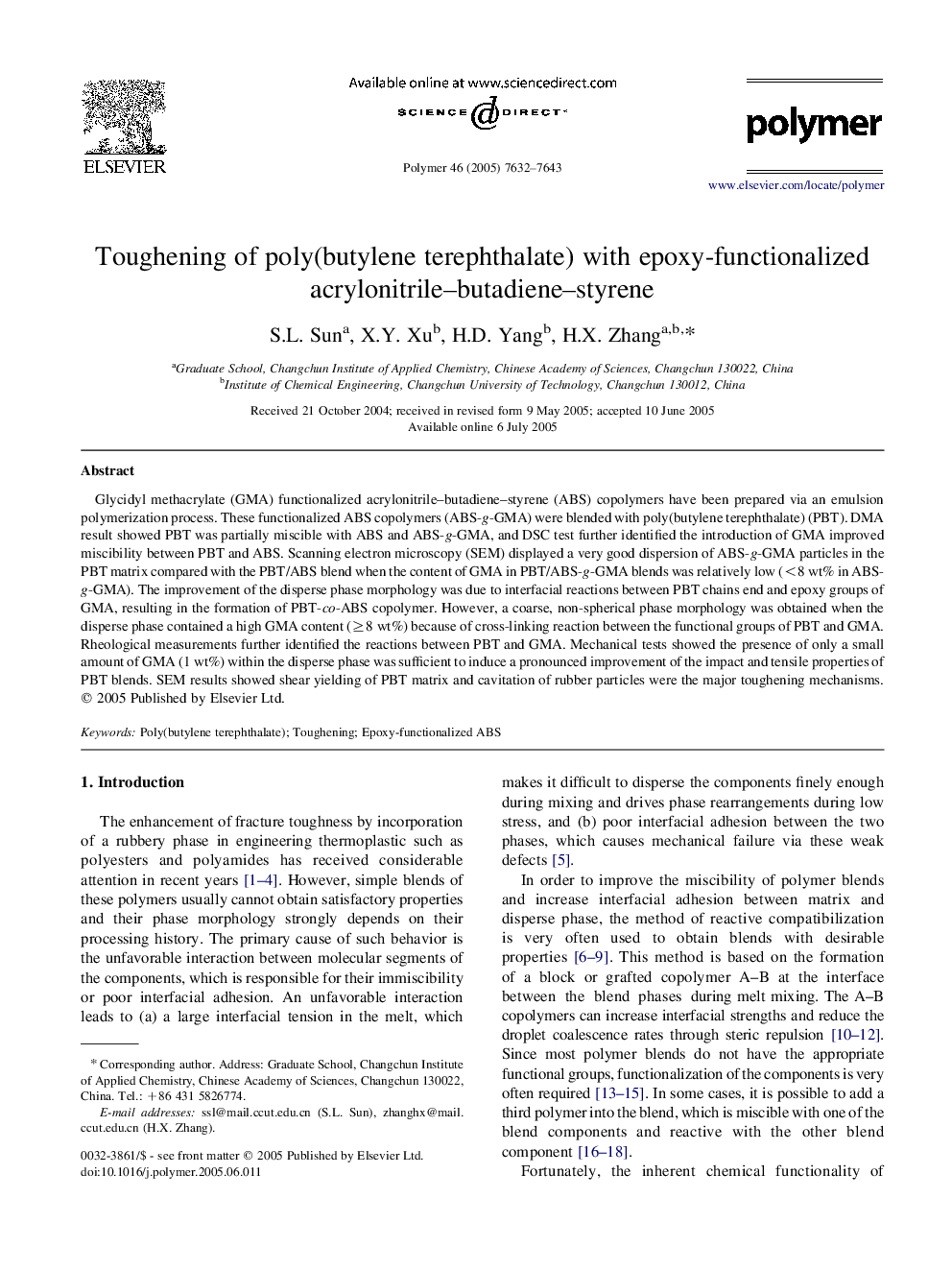| Article ID | Journal | Published Year | Pages | File Type |
|---|---|---|---|---|
| 5191260 | Polymer | 2005 | 12 Pages |
Glycidyl methacrylate (GMA) functionalized acrylonitrile-butadiene-styrene (ABS) copolymers have been prepared via an emulsion polymerization process. These functionalized ABS copolymers (ABS-g-GMA) were blended with poly(butylene terephthalate) (PBT). DMA result showed PBT was partially miscible with ABS and ABS-g-GMA, and DSC test further identified the introduction of GMA improved miscibility between PBT and ABS. Scanning electron microscopy (SEM) displayed a very good dispersion of ABS-g-GMA particles in the PBT matrix compared with the PBT/ABS blend when the content of GMA in PBT/ABS-g-GMA blends was relatively low (<8 wt% in ABS-g-GMA). The improvement of the disperse phase morphology was due to interfacial reactions between PBT chains end and epoxy groups of GMA, resulting in the formation of PBT-co-ABS copolymer. However, a coarse, non-spherical phase morphology was obtained when the disperse phase contained a high GMA content (â¥8 wt%) because of cross-linking reaction between the functional groups of PBT and GMA. Rheological measurements further identified the reactions between PBT and GMA. Mechanical tests showed the presence of only a small amount of GMA (1 wt%) within the disperse phase was sufficient to induce a pronounced improvement of the impact and tensile properties of PBT blends. SEM results showed shear yielding of PBT matrix and cavitation of rubber particles were the major toughening mechanisms.
